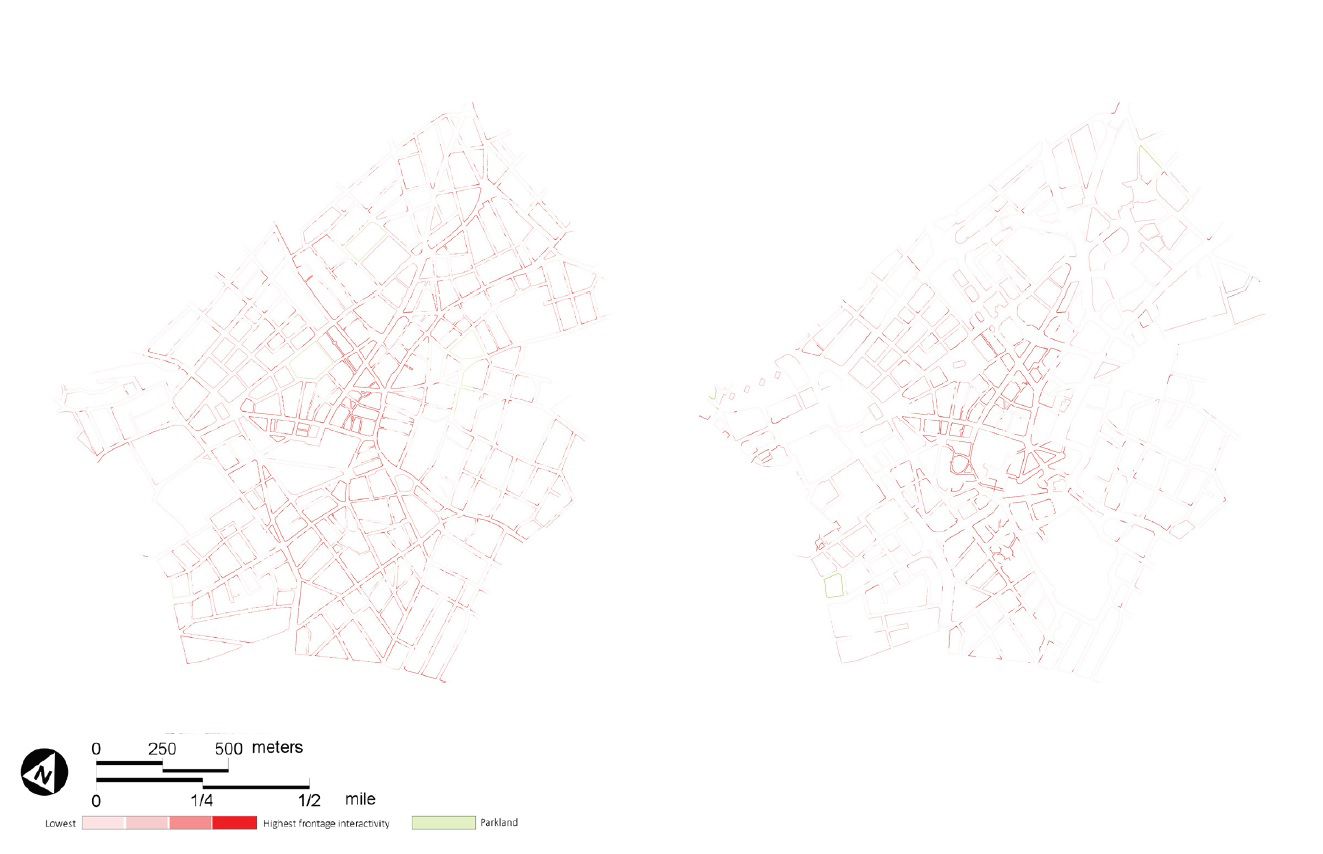Urban Morphologies and Frontages
Researcher:
Funded by the Ax:son Johnson Foundation, this project analyzes street-level frontage transformation between 1911 and 2017 in the two case study cities of Birmingham, England and Vancouver, Canada.
These case studies are part of a research project on an important but overlooked element of walkable and sustainable cities: the relation between buildings and public space. This research project studies why interesting and interactive street frontages are under threat, and what we can do to turn the tide. Urban scholars may agree what they are fighting for in their quest for interactive frontages, but no one seems to understand of what they are fighting against. Without knowing why our streets are lined by inactive buildings in the first place, how could we ever escape our ground floor stalemate? By demonstrating the forces and patterns behind frontage transformation in Europe and North America, this project will shift and inform the debate on their reactivation.
A detailed study of a century of transformation of street frontages in four representative cities in Canada, the United States, England and The Netherlands unveils an unprecedented insight on how the interplay between the changing ground floor economy, new technology, urban planning and social circumstances have influenced frontages. This project specifically studies their urban cores, as the most significant transformation has occurred here. The case studies demonstrate that the deteriorating relationship between buildings and streets goes far deeper than the commonly assumed explosive mixture of automobility and Modernism. Instead, frontages represent an intricately connected ecosystem of single agent decisions responding to external economic, cultural, political and technological forces, behaving in common and recognizable patterns that can inform policy and design.
With this knowledge, the project aims to generate an informed path forward by providing best practice policies, designs and strategies to reactivate frontages. The project draws and expands on the dissertation work of its main author, Conrad Kickert on interactive frontages in The Netherlands and the United States. Dr. Kickert has presented his work to audiences at the University of Berkeley, the University of Toronto, Beijing Jiaotong University, the Bauhaus Institute, TU Delft, and the KTH Stockholm.
The case study mapping has been completed in the summer of 2018, drawing from various archival sources including mapping, reports, directories, and databases. Currently, this work is yielding two key deliverables.
Firstly, the case studies of Birmingham, The Hague and Detroit are used in a journal article that analyses the spatial characteristics of store closures. The annualized chance of closure is statistically correlated to the connectivity of streets (their Choice Value at R5000) and their metric on-the-ground distance from the main retail corner of the city. The correlations are conducted through three statistical measures: a simple line regression, a panel regression, and a spatial probit model. All three yield moderate to strong correlation with the spatial variables. The article “Spatial dynamics of long-term urban retail decline in three Transatlantic Cities” has been sent to reviewers by the editor of Cities journal, one of the top journals in urbanism with an impact factor of 3.853.

Secondly, the four case studies are part of the book “Street-level Architecture: the past, present and future of interactive frontages”, which has been accepted by Routledge as a professional, wide-circulation, full-color book. This book will describe the external forces and internal patterns of frontage change over the past century, using the four case studies. Conrad Kickert is currently writing the narrative histories of the two remaining case studies (Birmingham and Vancouver), ready for completion by the spring semester. During the summer, Conrad will collaborate with Hans Karssenberg, partner at STIPO urban development in Amsterdam, on a series of case studies that exemplify frontage revitalization strategies. These case studies will form the second part of the book. Hans is a co-author on the book, lending his professional expertise and network in frontage revitalization to the project. He oversees a series of high-profile publications and conferences on frontage revitalization in countries across the globe. The final book manuscript is due November 1st to Routledge, with a likely publication date in 2021. It is highly remarkable that Routledge has agreed on a full-color, non-subsidized book publication, signifying their belief in the strong impact that Conrad Kickert’s frontage research will have on urban policy and practice.
Another outcome of Conrad Kickert’s focus on interactive frontages has been the collaboration with Dr. Emily Talen at the University of Chicago to edit the book “Streetlife: the future of urban retail”, to be published with the University of Toronto Press in 2020. This book presents various disciplinary perspectives on challenges and opportunities for urban retail in North American and Europe. KTH and CFP members Tigran Haas, Rosa Danenberg and Michael Mehaffy are contributing to the book.

